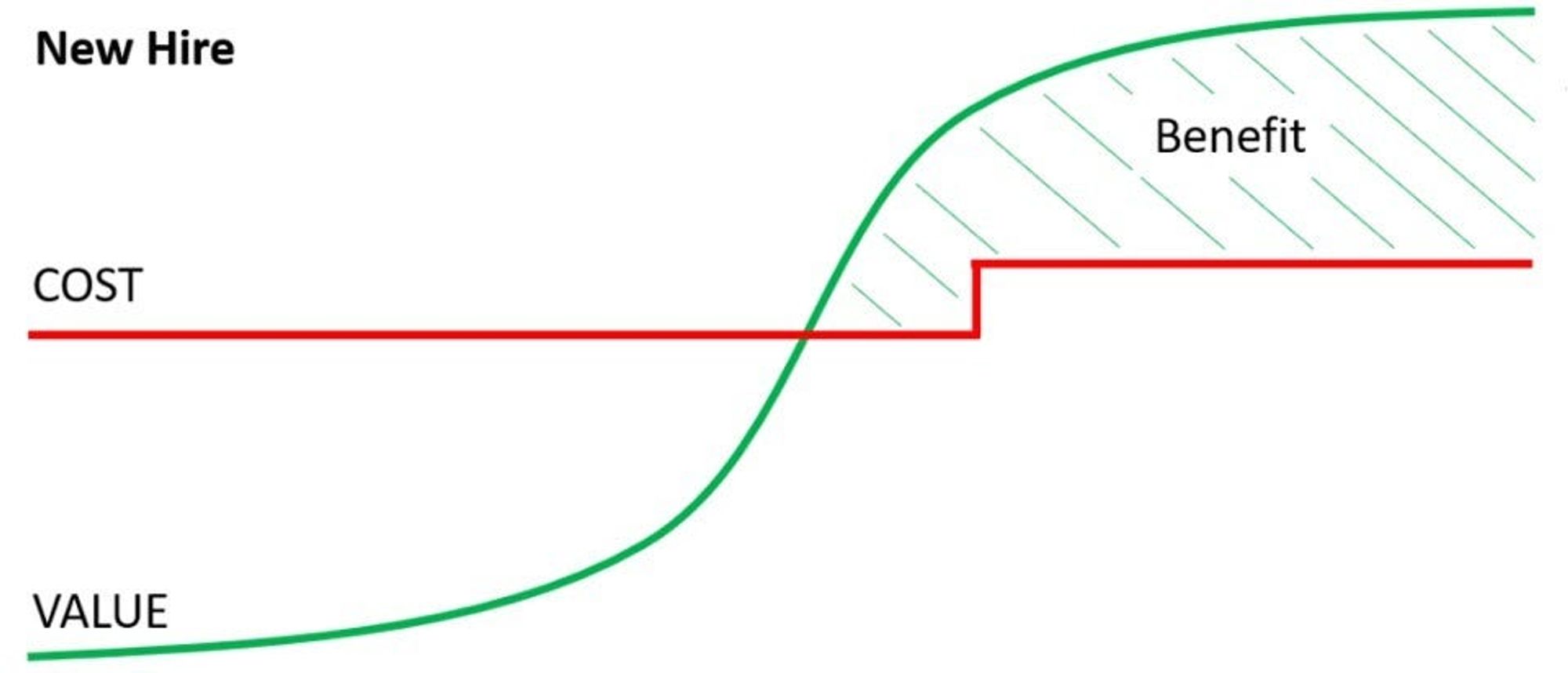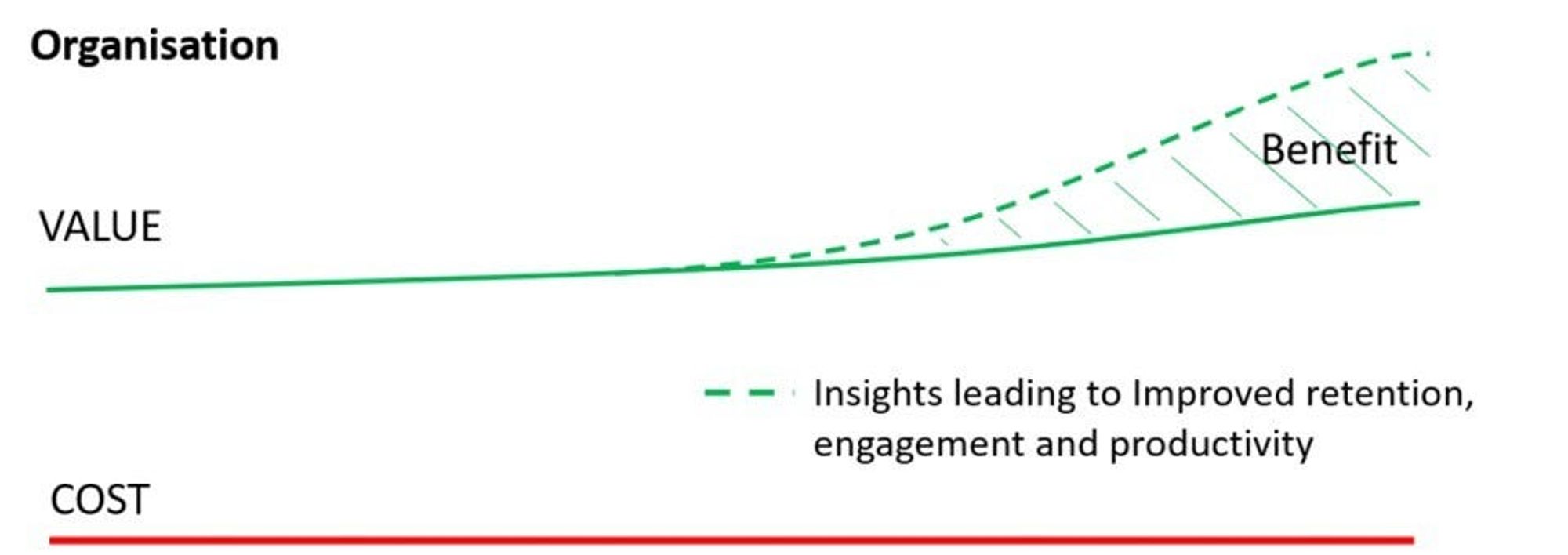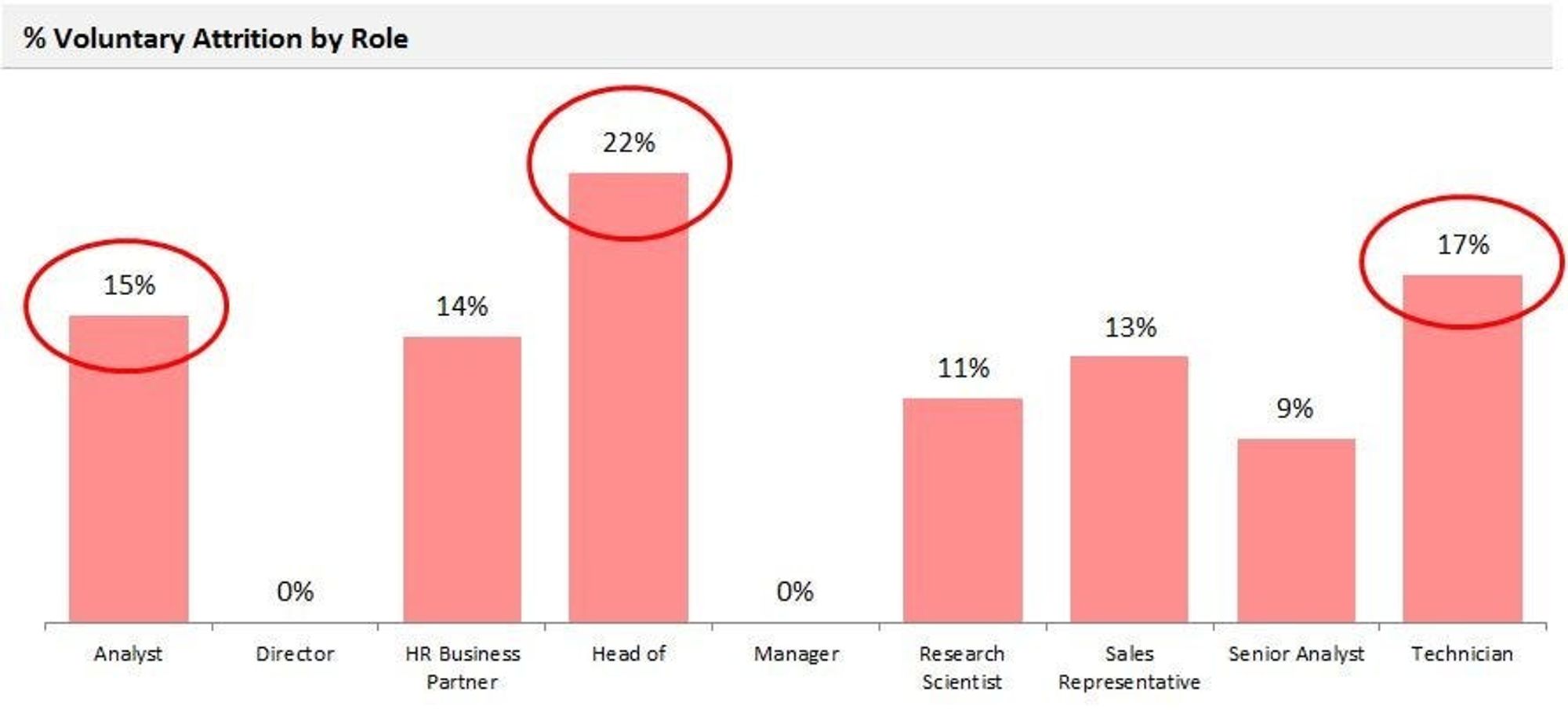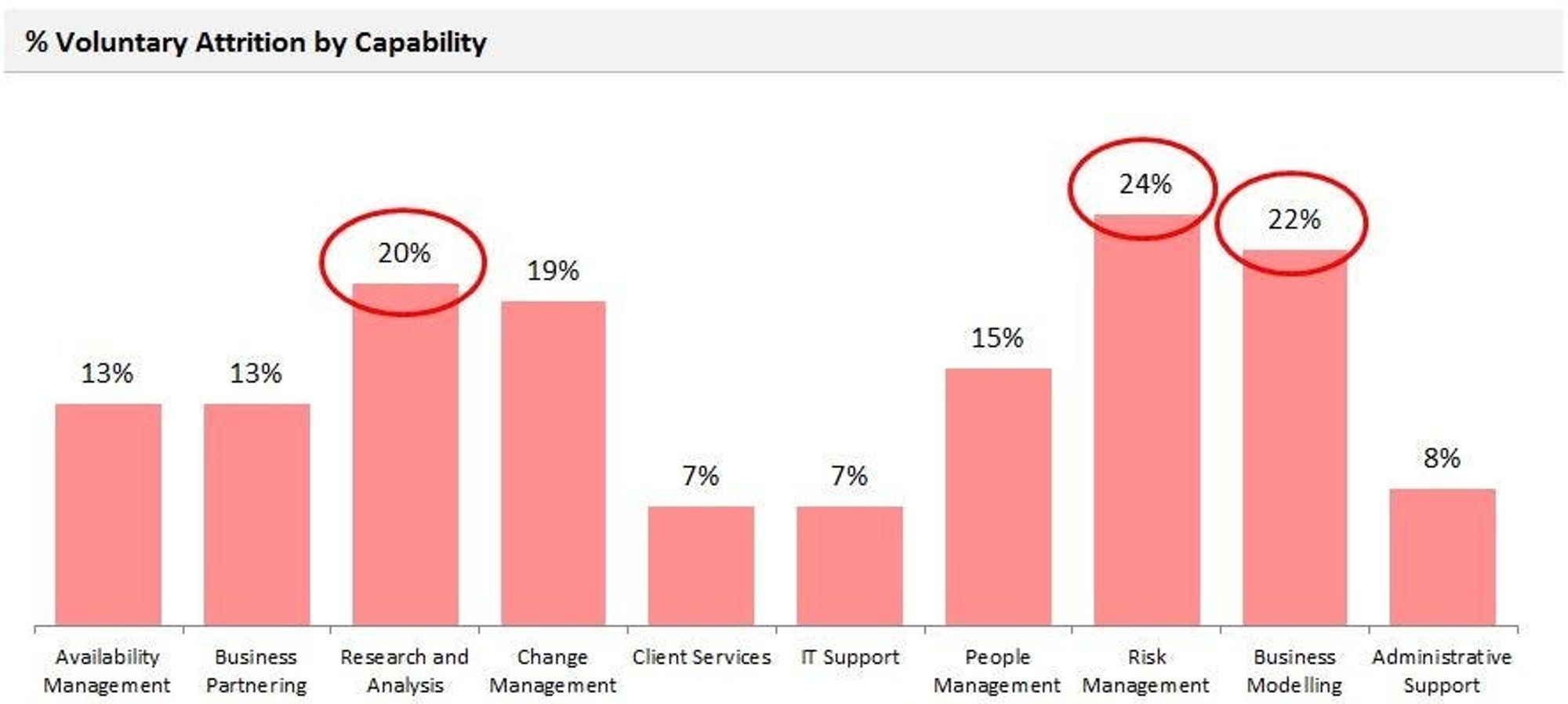
It has never been easier for employees to find new jobs. The internet has revolutionised the way we search for jobs, and it is easier for recruiters to communicate with future employees anywhere in the world.
When this occurs, the replacement cost can be high and include both direct and indirect cost of replacement. The below chart highlights the lag in the time it takes to benefit from a new hire over time.

Some roles may take two years to reach full productivity
As organisations being to look towards automation, the skills required for the workforce are becoming more specialised and in demand. Depending on the complexity of the role, it may take two years for the employee to reach 100% productivity vs. three months for task-orientated roles.
Voluntary turnover is costing many organisations millions of dollars

Above the surface, some of these costs will be apparent and include direct costs such as recruitment, agency and training.
Costs that are not talked about much include lost productivity, influence and connections as parts of these may need to reach a certain level of mastery for the employee to be fully productive.
Understand drivers to improve business outcomes

What if you could drive a 1% improvement to replacement cost through a range of initiatives using a data-driven approach? This opportunity could represent something material that could be used to build a business case or re-prioritise existing programs to tackle the issue.
A reduction of 1% to attrition may appear low but could represent great value to the organisation, i.e. Depending on the size of the organisation, say 2500 and the annual benefit could be $2.8m.
This is money that could be spent on other initiatives such as improving culture, engagement and productivity and building intelligence to understand workforce challenges before they happen.
Building a solid business case around the numbers
Getting a handle on existing high-level numbers should be easy. Start with total separations/churn over the past 12 months. Calculate an attrition rate against an average headcount over the same period and then calculate replacement cost.
Replacement cost can be calculated by role or salary band. For either, you will need to map productivity over a set period covering the whole period or in quarterly blocks. Focus on simplicity as this will help drive buy-in. With this information, calculate the inverse ‘lost productivity’ and multiply this by the salary for the period.

Navigating to real opportunity
The total replacement cost number may appear surprising to some and present a material opportunity. This number needs to be put into perspective. People will naturally leave the organisation for a wide range of factors, some of which you will have no control over. You will need to get underneath and understand what you can control internally through a range of targeted initiatives
To assist with this targeted analysis, you may want to measure attrition rates by role. This may provide you with outliers that are driven by poor leadership, culture or management practices, something that can be improved internally.
Red circle roles that you think are appropriate, and you may be able to identify the 1% opportunity.

Another area of analysis could include the capability area. This can be a little more difficult to understand as employees can have multiple capability’s but may act as an important lens to build bench strength and allow for more targeted initiatives to drive a reduction.

Overall;
- First, understand the cost impact by running the numbers over a 12 month period and segmenting time to productivity across 3–4 groups.
- Calculating attrition rates by department and role to understand what can be controlled.
- Modelling can be completed in Excel, nothing fancy here.
- When developing initiatives think about homogenous groups that you can segment against, to understand if initiatives are having an impact.
- Completing an in-depth analysis of the survey, pay, mobility, leadership and work-life variables and intervening on high-risk employees or improving the overall employee experience will add to the success.
I hope you found this useful. I will be posting regularly so stay tuned. If you want additional content, check out Analytics Roundtable, to stay up to date with the latest technology and chat with others.

Ensuring value in the recruitment and new hire process
For HR professionals, there are many recruitment metrics, however, most do not provide the right value when measuring the effectiveness of the function

Generating HR Insights
Your team will require a few different skills to optimise the impact and frequency of workforce insights.